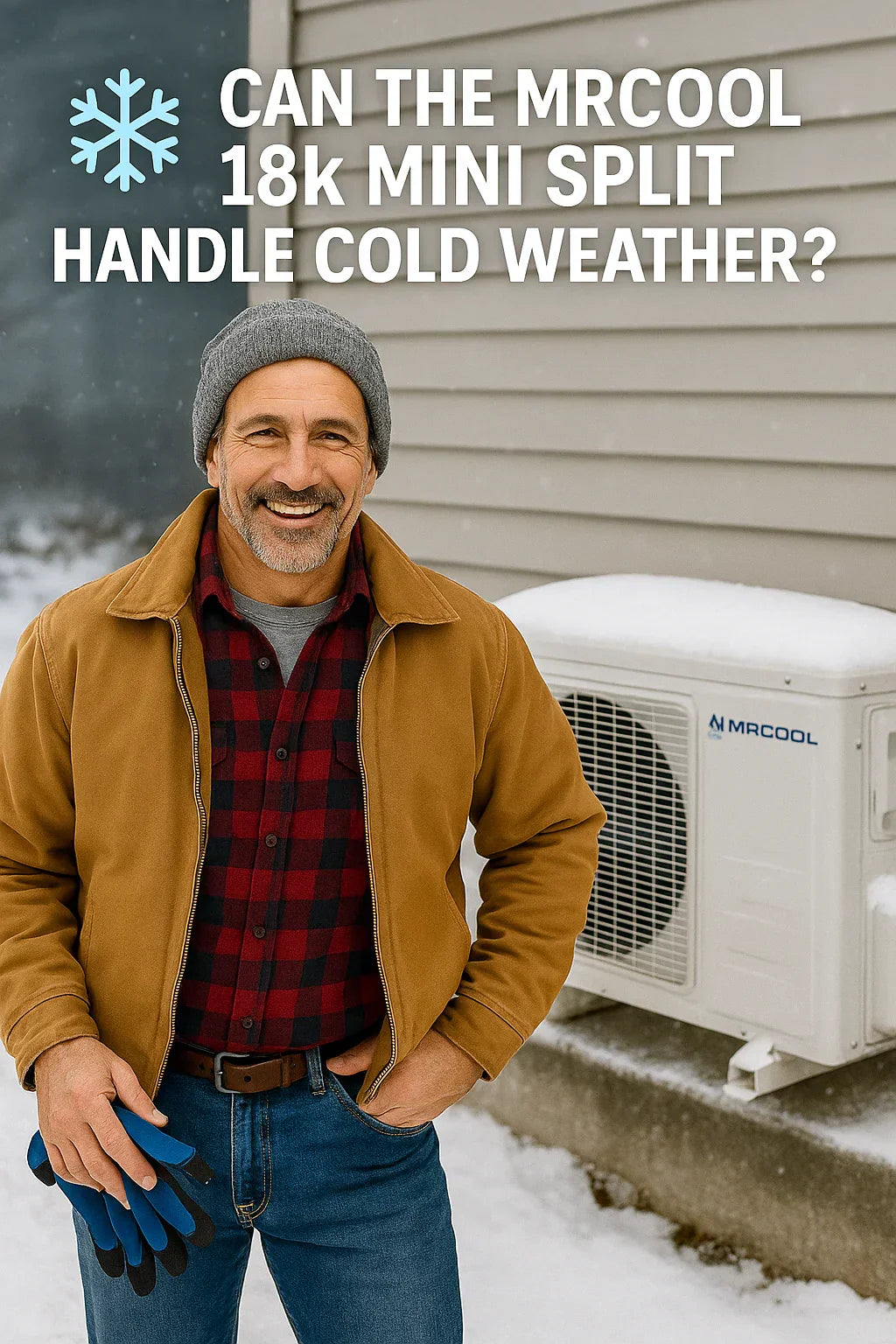Mike, if winter chills are on your mind, you’re in the right spot. Let’s walk through everything from specs and defrost behavior to cold-climate performance, best practices, and backup options—all the real-world info you’ll need to feel confident about your MRCOOL DIY Mini-Split Series 5th Generation 18,000 BTU 2-Zone Wall Mounted 9K+9K Heat Pump System as your year-round HVAC system.
🔍 1. Facing the Cold-Climate Question
Many homeowners worry: Can my heat pump really warm the house when it’s frigid outside?
The answer: Absolutely—but only if you pick the right system, use it smart, and prep your space properly. MRCOOL’s 18k models—especially the 5th Gen—are designed to perform well even when temperatures dip below freezing. Let’s unpack why.
🌡️ 2. What Makes a Cold-Climate Heat Pump?
-
Inverter-driven compressors can adjust output dynamically—no short cycling and better efficiency at low loads.
-
Heat pumps either degrade gradually or sharply in cold conditions. Premium cold-climate units maintain much higher capacity down to –13 °F.
🥶 3. MRCOOL 18k: Specs for Cold Weather
According to MRCOOL documentation:
-
Operating range spans from –13 °F up to 115 °F .
-
At 47 °F, output hits ~17k BTU; at 5 °F, it’s a solid ~14k BTU—plenty to heat most 1,000–1,200 sq ft spaces if insulated properly.
Simply put: the 18k model will comfortably keep households warm down to single digits or even below zero, assuming your insulation and load sizing are solid.
🔁 4. How Defrost Mode Works on MRCOOL
Every cold-weather pump—including MRCOOL—uses a defrost cycle:
-
Outdoor coils freeze as they extract heat.
-
Defrost cycle reverses refrigerant flow and pauses outdoor fan.
-
Frost melts off—typically in under 15 minutes.
-
Heating resumes smoothly.
This is automatic and normal—expect a short burst of cooler indoor airflow, but not enough to throw off your comfort long term.
🧾 5. Field Experience in Real Winters
PickHVAC shares:
“MrCool claims heat to –13 °F … homeowners report maintaining homes even in single digits”.
HVACDirect notes DIY MRCOOL kits manage down to –15 °F reliably.
One user on a forum said:
“Provider defrost regularly … lasts around 3 minutes or less.” — Normal behavior.
Summary: MRCOOL performs solidly through typical winter cycles, with proper sizing and ventilation.
🔌 6. Backup Heat: Smart Planning
Even the best heat pump sometimes needs help under severe conditions. Your backup options include:
| Backup Type | Pros | Cons |
|---|---|---|
| Electric resistance strip | Simple, no ductwork | High running costs |
| Gas furnace (dual-fuel) | More heat in deep cold | Requires ducting |
| Panel heaters or baseboards | Easy to add locally | Limited zone control |
For Mike, a small electric backup in the coldest room—around 2–3 kW—is often enough insurance.
🧣 7. Preparing for Winter: Smart Tips
-
Seal & insulate the attic, windows, doors, and floors.
-
Set heating to ~68 °F overnight, avoiding unnecessary defrost triggers.
-
Use low fan speeds for even distribution.
-
Clear snow around the outdoor unit.
-
Check filters and clear coils regularly.
Proper preparation ensures fewer defrost cycles and better comfort.
💡 8. Efficiency & Costs in Cold Conditions
-
COP (Coefficient of Performance): MRCOOL achieves ~2.5–3.5 COP above 25 °F. That means every ₹1 of electricity delivers ₹2.5–₹3.5 worth of heat.
-
Below 0 °F, efficiency drops, but total energy cost remains lower than baseboard or gas systems in many regions.
-
Backup strip heaters only run infrequently—adding minimal expense compared to overall energy use.
⚠️ 9. Pitfalls to Watch For
-
Oversizing issues lead to inefficient defrost cycles.
-
Frozen condensate pans/drains can freeze and backflow—installing proper insulation or a pan heater helps.
-
Frequent defrost cycles signal airflow blockages or low refrigerant.
-
Prolonged defrost cycles (10–15 min) may indicate a stuck reversing valve.
These aren’t system failures—just signals to tweak installation or schedule maintenance.
👷 10. Winter Troubleshooting & Tuning
-
E0/E8 codes often deal with defrost sensor issues—clean coils and retest.
-
Low-pressure codes below –5 °F might need professional charge refill.
-
Defrost too long? Check weak airflow or sensor misplacement.
-
Enable “Low Ambient” mode or adjust defrost thresholds via settings.
💬 11. Voices from the Field
“Ran all winter at 5 °F without furnace—backup only fired 10% of days.”
“Defrost cycles happened but indoor stayed within 2°F of setpoint.”
Several MRCOOL users report consistent, comfortable winter performance with minimal backup usage.
🧭 12. So, Is It Right for Mike?
✅ Yes, if:
-
You live where temps rarely drop below –10 °F
-
Your home is insulated properly
-
You add a small backup heat source
-
You keep condensate drains clear and filters clean
✅ Consider additional care if:
-
You’re in deep-cold zones (<–15 °F regularly)
-
Backup heating or hyper-heat models may be needed
🧩 13. Takeaway Checklist
-
Outdoor rated to –13 °F
-
Acceptable defrost behavior
-
Backup heat ready
-
Proper insulation and sealing in place
-
Drain and coil maintenance prep done
With these boxed-check, you’ve got a reliable system ready for cold season.
📺 Want to See It in Action?
Here’s an instructional overview of how defrost mode operates in real MRCOOL units:
✅ Final Verdict
Yes, the MRCOOL 18k 2-Zone Mini-Split stands up well in cold weather—down to about –10 °F if you maintain it and have basic backup. It’s comfortably within range in most of the U.S., Canada, and northern climates. With a little prep, you’ll stay warm, efficient, and in control—just the way Mike likes it.
In the next topic we will read more about: How to Extend the Lineset for Your DIY MRCOOL Install







